How This Artist Turns Recycled Material into Art
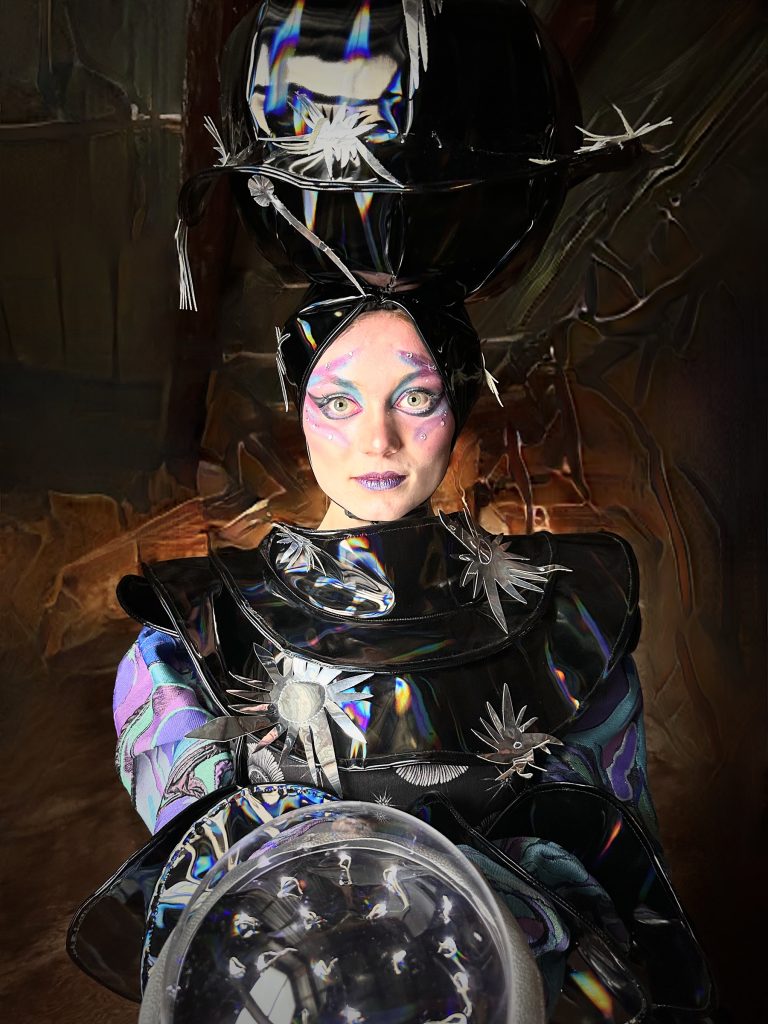
At Women in Arts Network, we love conversations that open a window into the many ways women create, adapt, and share their stories through art. In this interview, we sit down with experimental artist Leisa Rich, whose career has stretched across continents, materials, and decades of teaching.
Leisa invites us into her world where fibre, recycled materials, 3D printing, laser engraving, and even AI become tools for storytelling and exploration. She speaks about how early childhood moments and extended hospital stays shaped her relationship with touch, and how those experiences continue to influence the environments she builds for others to step into. She shares what it means to allow audiences to not just look at her work, but to feel, play, and sometimes even co-create with her.
We also learn how a stubborn streak led her to ignore “rules” about what materials could or could not be used, and how that spirit of curiosity has carried her from weaving with tin foil as a student to publishing how-to books on innovative materials like Fosshape®. She opens up about the balance of using repurposed and industrial materials while staying mindful of environmental impact, and how writing has become another way for her to share knowledge beyond the studio.
Through this conversation, Leisa offers insight into what it means to continually adapt, whether as a maker, an educator, or a storyteller, while holding onto the joy of experimentation.
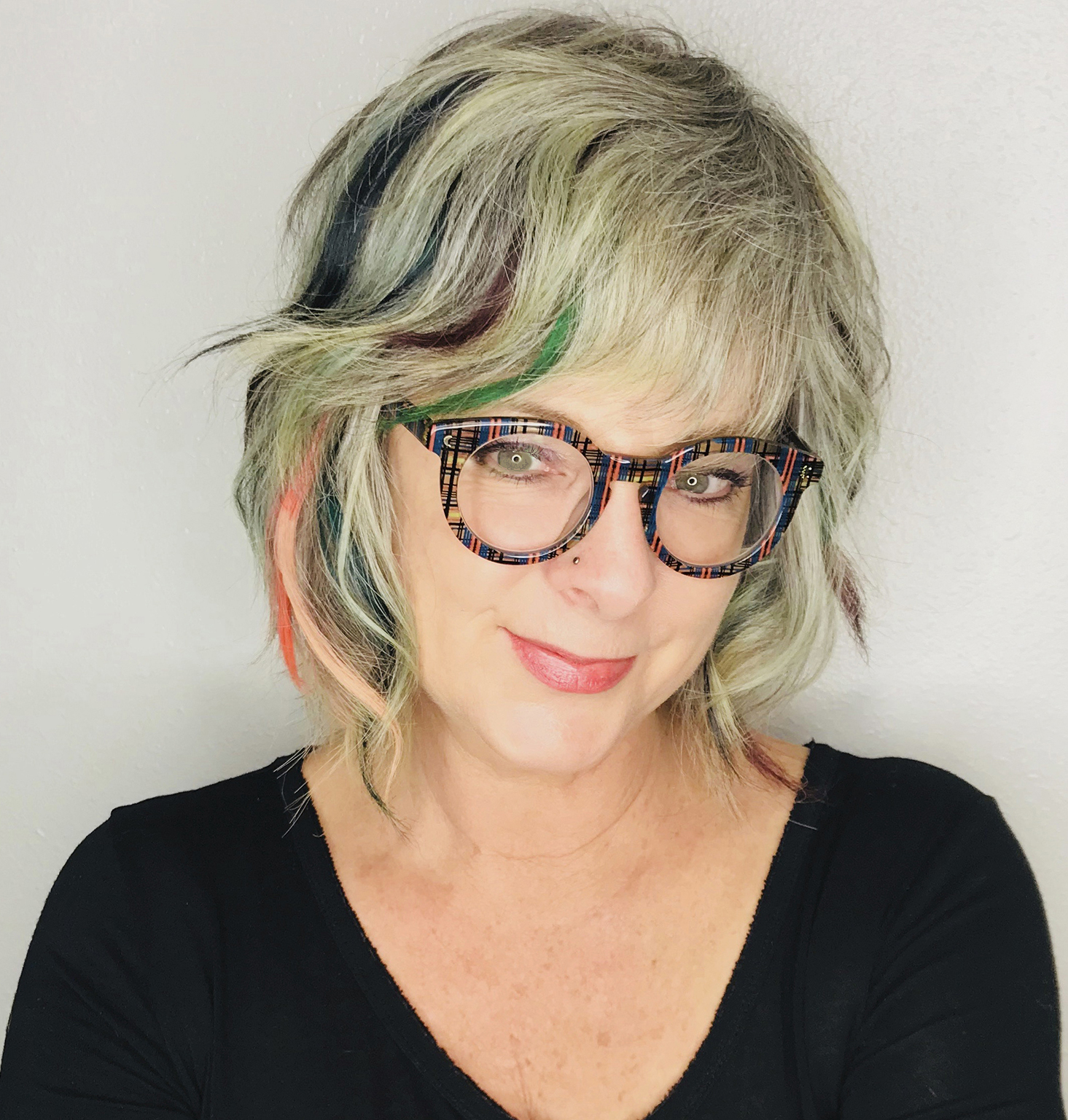
Leisa Rich is an experimental artist who transforms the common and alternative in unique ways using fibre materials and processes, mixed and repurposed media, 3D printing, laser engraving and AI. She is a fearless, creative explorer. Rich holds an MFA, a BFA and a B.Ed. Art degrees. She is featured in notable museums, galleries, books, interviews and videos. Rich has published a children’s book, Animal Alphabet Travelling Twisters, and a series of How-To art books about a unique material called Fosshape. Her work is in many permanent, corporate/hospitality collections, including Delta Airlines Inc., Hilton Hotels, Pro-Demnity Insurance, Emory Healthcare, The Dallas Museum of Art, and in private homes. She is a recipient of distinguished fellowships and awards. Rich moved back to her home country, Canada, in 2020 after living abroad for many years. She lives on an island accessible only by ferry, where there is no retail, no doctors, no streetlights. Her best friends are deer, mink, fox, coyote, birds, snakes and frogs. Leisa likens it to being in the children’s book, Bambi.
1. You mention childhood moments like riding “It’s A Small World” and tea parties under a willow tree as early influences. How do those memories still shape the way you approach your work today?
I am always thinking about who is seeing and experiencing my art, and how I can impact them in visual, tactile, auditory or sensual ways. By creating various forms of art, I give my audience the freedom to choose their experience. They can be most comfortable viewing it, immerse themselves in one of my environments, or engage with the elements I provide, becoming co-creators with me. In addition, every piece I make is a reflection of some vital concept I am dealing with or mulling over. It is also my way of “hugging” others, touching them in some way.
I cannot resist embracing uncertainty with curiosity and openness and exploring and pushing usual and unusual materials and typical techniques in unintended ways.
Leisa Rich
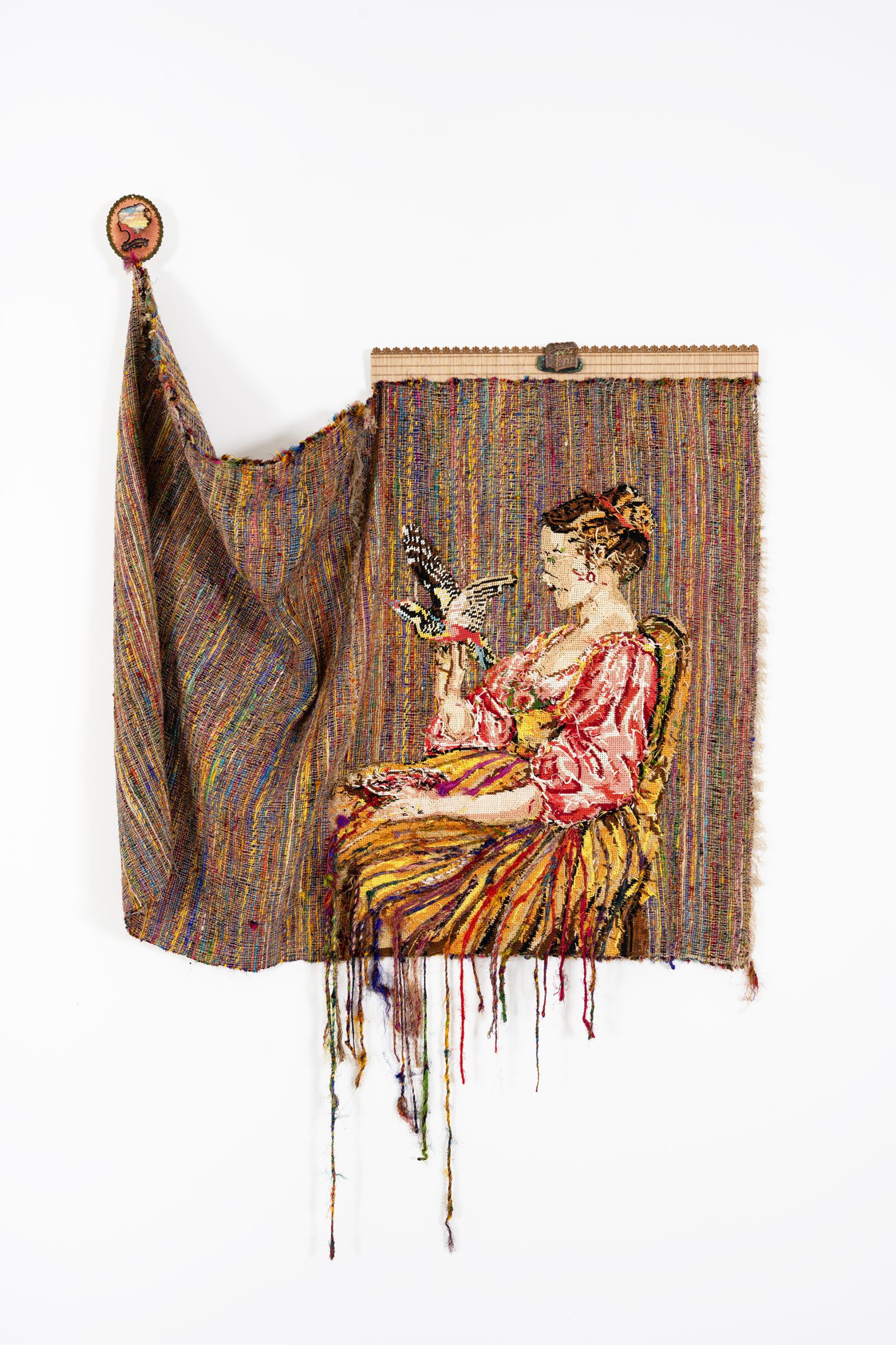
2. You’ve worked with such a wide range of materials — from vintage textiles to 3D printing and Fosshape®. What draws you to experiment so freely, and is there a material that’s surprised you the most?
I have always been a stubborn and obstinate person. Maybe it is because I had to rise above so many medical challenges as a child. I was in my world of my creation, probably to deal with everything I was going through. Perhaps, in defiance, I just did whatever I wanted to do, whatever made me feel good. Going on Saturdays to my Dad’s electrical shop as a child and pre-teen, and making things from nuts, bolts, wire and whatever else was on hand, and hanging out at the glaziers/plumbers and other contractors in the shop area, and getting stuff from them and made with their guidance, led me to create from whatever was on hand.
Later on, being told by weaving teachers and fiber art professors that I couldn’t work with “strange” materials – such as wanting to weave with plastic wrap and tin foil in 1978 – I stopped listening to what I couldn’t do, or couldn’t use, and because I loved the results I was getting from diverse materials and techniques, just kept right on experimenting. A material that has surprised me the most would be Fosshape. I did things with it early on that hadn’t been done with it before, and as I love to share my knowledge, I wrote a series of three Fosshape How-To books, available on blurb.com. It is a wondrous material with so many applications and possibilities!
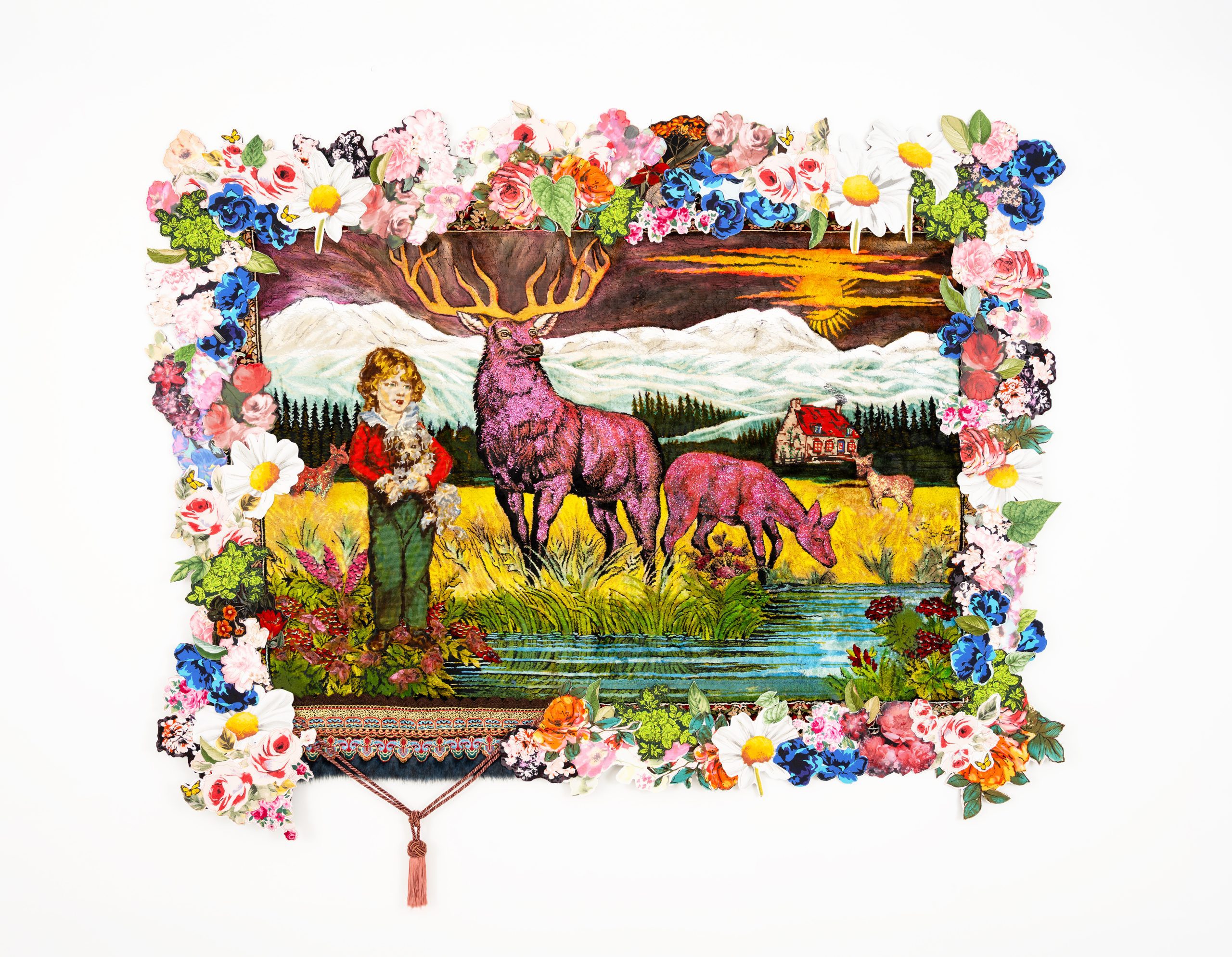
3. Much of your recent work speaks to environmental concerns. How do you balance making visually engaging work while also confronting such urgent issues through your materials and message?
Life is all about balance. I use repurposed materials and materials that are harmful to the environment, using them judiciously. I am a vegan, so I feel secure in the knowledge that my impact on climate change is much less than that of humans eating an animal-based diet. Most artists are facing the effects of their practice. For instance, acrylic paint is plastic, making it challenging to be environmentally friendly if you are a painter. We need to assure ourselves that our pieces will live on long after us, and that that is different from single-use, throw-away plastics. I recently created a 10′ X 10′ room installation that had 3D printed endangered ocean animal skeletons spread out on the floor, “bleached” coral and stalagtites/stalagmites, ‘underwater’ light effects and ocean sounds. The installation invited the public into the space to ponder the message and to engage via immersion as they contemplated what I was trying to say to them.

4. You’ve been an educator for over five decades across North America. What keeps teaching meaningful for you, and how has it evolved alongside your studio practice?
I LOVE seeing the ways that others can take the techniques I introduce them to, then run with their own ideas and do their own thing. The resourcefulness and creativity abounds in my classes and workshops, and that is very fulfilling. I used to teach a lot of children, but aging led me to realize that my stamina and patience had waned some, and so I now work primarily with adults. That is hard for artists like myself… suddenly feeling limitations that quell the excitement and obsession with making, growing and passing that enthusiasm on to others.
Every artwork is a joy and a delight, an exercise in change and adaptation, layers peeled back, things joyfully added, until just right.
Leisa Rich
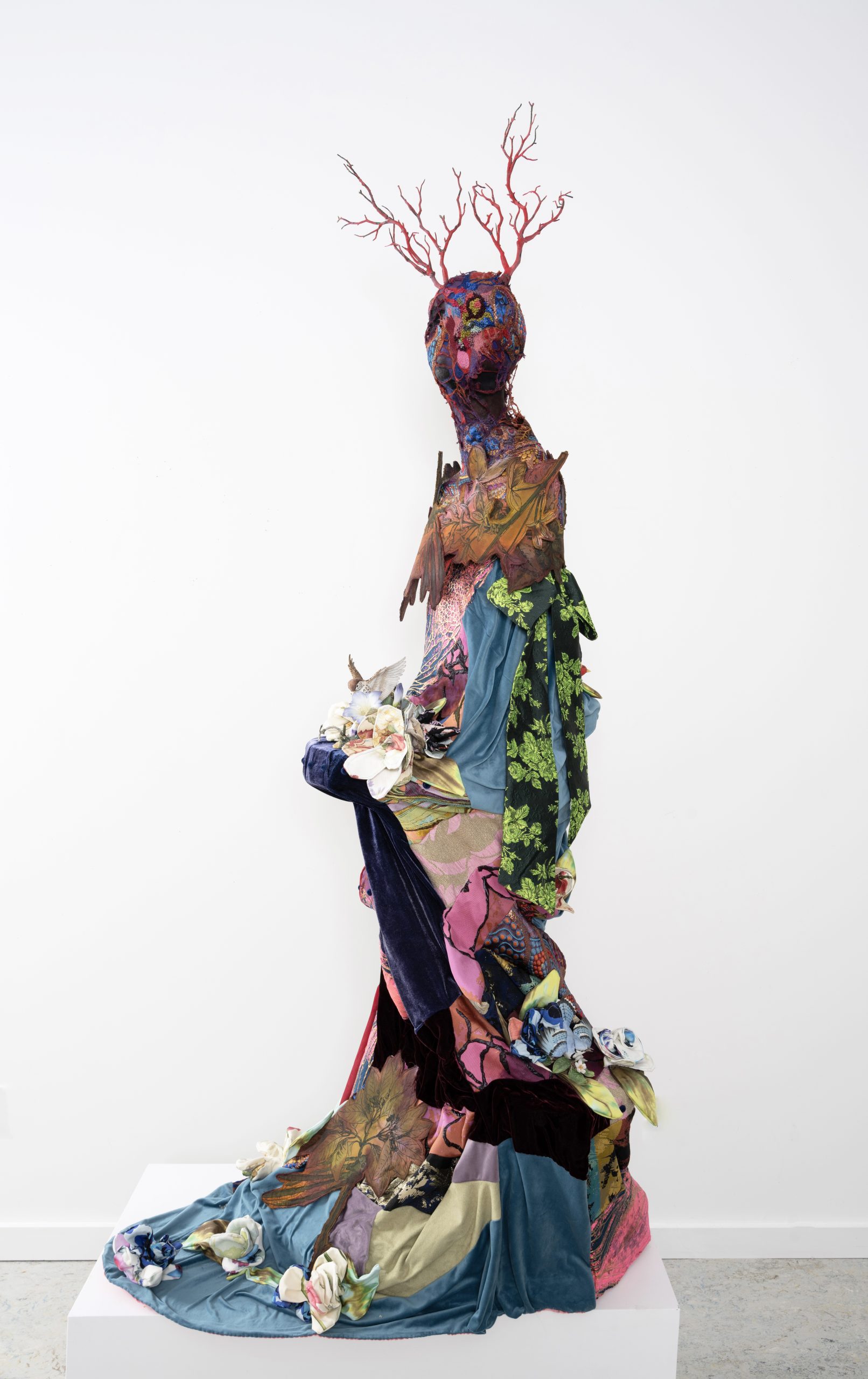
5. You’ve written and published in many formats — from children’s books to how-to guides. What does writing give you that art-making doesn’t, and how do the two intersect in your creative life?
I love to share. I give freely of my materials, resources, techniques and ideas. There is a lot of gate-keeping in the art world, since it is such a complex arena within which to survive. Writing spreads information and ways of seeing to many, and I’m so happy that others can benefit from what I do and how much I love to do it.

Leisa Rich’s work is about transformation, touch, and curiosity. She takes everyday and unconventional materials and reimagines them into environments, sculptures, and wearable pieces that invite us to step closer and sometimes even participate.
From her early experiences with textiles during childhood hospital stays to her fearless experimentation with new technologies and recycled media, her journey shows us the value of questioning boundaries and finding new ways to connect. What we learn from her art is that creativity can be a form of comfort, an act of sharing, and a way to remind us of our interconnectedness with each other and with the world around us.
To learn more about Leisa, visit the links below.
